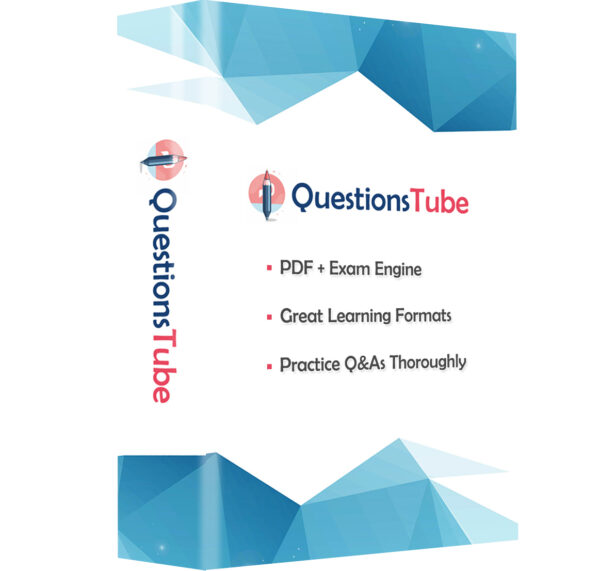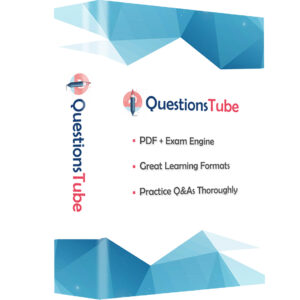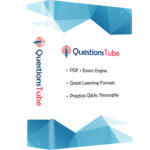Order our MuleSoft Integration Architect I Practice Questions Today and Get Ready to Pass with Flying Colors!
Exam Code: MuleSoft Integration Architect I
Exam Name: Salesforce Certified MuleSoft Integration Architect I
Exam Q&As: 273 Q&As
Last update: February 16, 2025
Product Description
The Salesforce Certified MuleSoft Integration Architect I certification is highly valued in the IT industry and obtaining it can open a variety of career opportunities. One of the best ways to prepare for the Salesforce MuleSoft Integration Architect I exam is by practicing with high-quality practice questions and understanding the answers. QuestionsTube offers online MuleSoft Integration Architect I exam questions with precise answers to help you prepare for MuleSoft Integration Architect I exam.
Salesforce Certified MuleSoft Integration Architect I Certification Exam Overviews
The Salesforce Certified MuleSoft Integration Architect I certification, formerly known as the MuleSoft Certified Integration Architect – Level 1 exam, is now part of the Salesforce Architect certification program after a shift from the MuleSoft certifications. It’s tailored for individuals who have experience leading Anypoint Platform implementations to ensure the quality and operationalization of solutions. Applicants for this certification are advised to have an active Salesforce Certified MuleSoft Developer I credential. As a certified professional, you will be able to drive and be responsible for an organization’s Anypoint Platform implementation and the technical quality, governance (ensuring compliance), and operationalization of integration solutions.
To make sure that you can prepare for the MuleSoft Integration Architect I exam well, you need to read all exam objectives first:
- Summarize the fundamental value proposition of MuleSoft Catalyst and Catalyst Knowledge Hub.
- Differentiate between functional and non-functional requirements for integration solutions.
- Select features of Anypoint Platform for designing and managing web and event-driven application programming interfaces (APIs).
- Select deployment options of the Anypoint Platform control plane and runtime plane.
- Analyze the mode of operation of a Mule runtime cluster that differentiates it from other deployment options.
- Design integration solutions deployed to CloudHub to address specific requirements using CloudHub’s network features.
- Choose Mule runtime domains and domain-shared configuration only for those requirements that benefit from their capabilities.
- Design Mule applications making effective use of the implications of the Mule 4 class loader isolation of Mule modules.
- Describe the characteristics and implications of the Mule 4 reactive event processing model.
- Create high-level integration architectures using API-led Connectivity.
- Create high-level integration architectures using web APIs and HTTP.
- Create high-level integration architectures using event-driven APIs and message brokers.
- Design Mule applications and integration solutions using common messaging patterns and technologies.
- Select among available options for setting Mule application properties.
- Select and use fundamental features available to all Mule applications.
- Design Mule applications using core routers available to all Mule applications.
- Describe the fundamental features of the Salesforce Connector.
- Design Mule applications using common features of core connectors.
- Select and use the available sources of metadata in the Transform Message component.
- Design Mule applications and integration solutions using a Common/Canonical Data Model.
- Correctly apply methods for validating data in Mule applications.
- Design unit test suites using MUnit and Studio’s related features.
- Identify test requirements and scenarios that are best addressed using integration testing or performance testing.
- Design Mule applications using Virtual Machine (VM) queues and the Anypoint VM Connector in all deployment options.
- Design Mule applications using Object Stores (OSs), the OS Connector, and OS services in all deployment options.
- Design Mule applications and integration solutions using stateful components that may be configured with an OS.
- Select alternatives to traditional transactions (local or XA) where appropriate and beneficial.
- Recognize the purpose and characteristics of Until Successful scope, reconnection strategies, and redelivery policies.
- Differentiate between disaster recovery and high availability and the basic approaches to achieving either in all deployment options.
- Design Mule applications and integration solutions using local and XA transactions for all Mule connectors that support them.
- Design Mule applications and integration solutions to meet performance and capacity goals.
- Design Mule applications using available streaming features in Mule.
- Design Mule applications to process large sequences/streams of messages.
- Design secure access to the Anypoint Platform control plane and APIs.
- Design secure edge access using Anypoint Security.
- Analyze and counteract potential security vulnerabilities of Mule applications.
- Recognize the audit logging capabilities of the Anypoint Platform.
- Create the high-level design of continuous integration (CI) and continuous delivery (CD) pipelines for Mule applications using MuleSoft-provided Maven plugins.
- Identify the features and characteristics for automating interactions with the Anypoint Platform.
- Design the logging configurations and options of Mule applications in all deployment options.
- Identify the features and characteristics of Anypoint Monitoring in all deployment options.
MuleSoft Integration Architect I Practice Questions with Precise Answers
MuleSoft Integration Architect I practice questions of QuestionsTube is designed to help you prepare for the Salesforce Certified MuleSoft Integration Architect I exam by providing a thorough understanding of the exam topics. Each question is accompanied by a precise answer and a detailed explanation that helps you understand the concept behind the question. This ensures that you memorize the correct answer and understand the reasoning behind it.
Multiple Formats and Free Updates
QuestionsTube offers Salesforce MuleSoft Integration Architect I practice questions in two formats: PDF and Exam Engine. The PDF format allows you to study the questions on any device, while the Exam Engine format simulates the real exam experience. Both the two formats can be downloaded directly without waiting. Additionally, we offer free updates for different periods, including 3-month, 6-month, and 1-year intervals. This ensures you have access to the most up-to-date content, and you can confidently prepare for the MuleSoft Integration Architect I exam.
Money-Back Guarantee
We are confident in the quality of our MuleSoft Integration Architect I practice exam questions and offer a money-back guarantee. If you fail the exam with the MuleSoft Integration Architect I exam questions, we will refund your purchase price. This policy ensures that you can confidently purchase our product, knowing that you are not taking any financial risk.
In conclusion, the Salesforce MuleSoft Integration Architect I study materials of QuestionsTube are an excellent resource for anyone preparing for the Salesforce Certified MuleSoft Integration Architect I exam. By using the MuleSoft Integration Architect I exam questions, you can prepare for the exam with confidence and increase your chances of passing the MuleSoft Integration Architect I exam on the first try.










Reviews
There are no reviews yet.